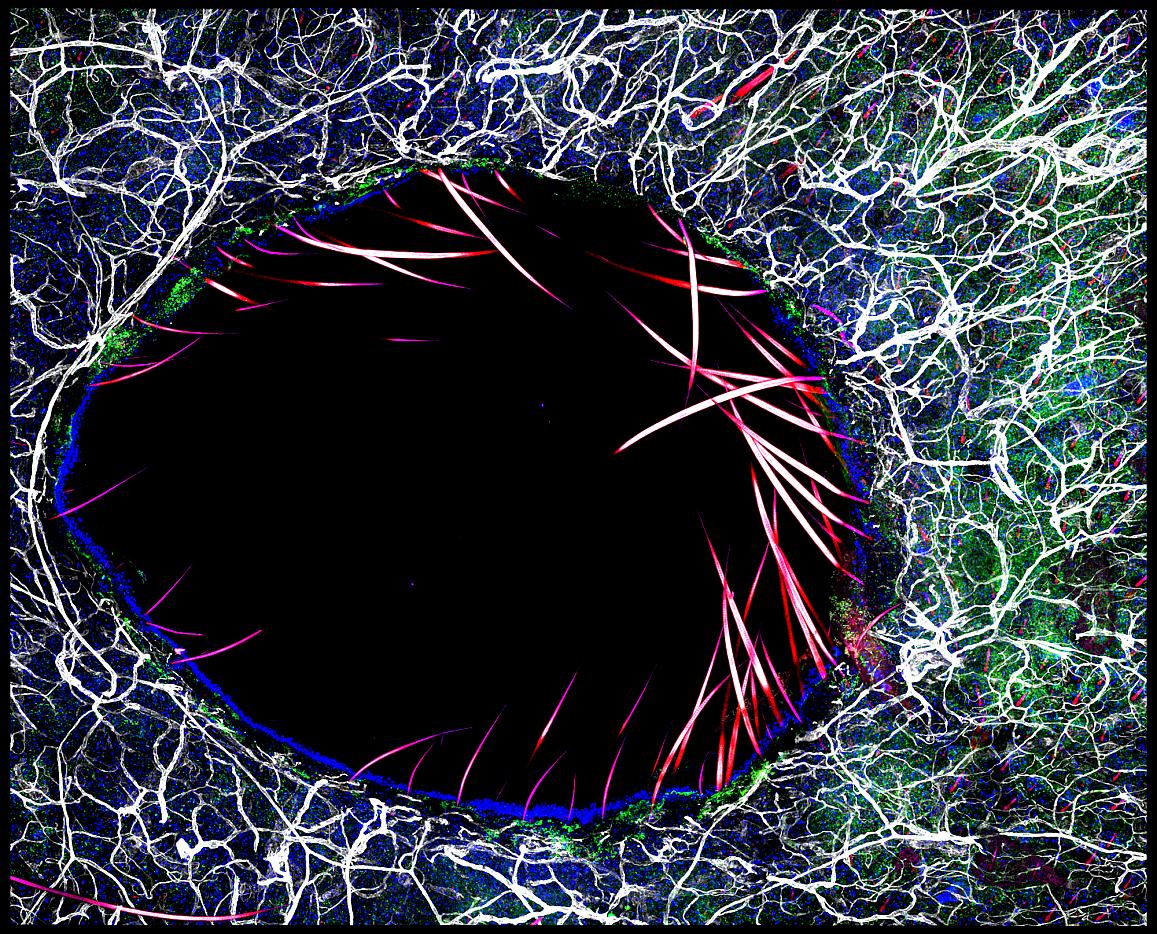NIH IRP scientists find microbes on the skin of mice promote tissue healing, immunity
Insights may inform wound management techniques.
Beneficial bacteria on the skin of lab mice work with the animals’ immune systems to defend against disease-causing microbes and accelerate wound healing, according to new research from scientists at the National Institute of Allergy and Infectious Diseases, part of the National Institutes of Health. Researchers say untangling similar mechanisms in humans may improve approaches to managing skin wounds and treating other damaged tissues. The study was published online today in Cell.
Like humans and other mammals, mice are inhabited by large, diverse microbial populations collectively called the microbiome. While the microbiome is believed to have many beneficial functions across several organ systems, little is known about how the immune system responds to these harmless bacteria.
To investigate, NIAID scientists led by Yasmine Belkaid, Ph.D., chief of the Mucosal Immunology Section of NIAID’s Laboratory of Parasitic Diseases, observed the reaction of mouse immune cells to Staphylococcus epidermidis, a bacterium regularly found on human skin that does not normally cause disease. To their surprise, immune cells recognized S. epidermidis using evolutionarily ancient molecules called non-classical MHC molecules, which led to the production of unusual T cells with genes associated with tissue healing and antimicrobial defense. In contrast, immune cells recognize disease-causing bacteria with classical MHC molecules, which lead to the production of T cells that stoke inflammation.

Immunofluorescent image of immune cells surrounding a skin wound, enriched in the beneficial bacteria S. epidermidis.
This page was last updated on Friday, January 21, 2022